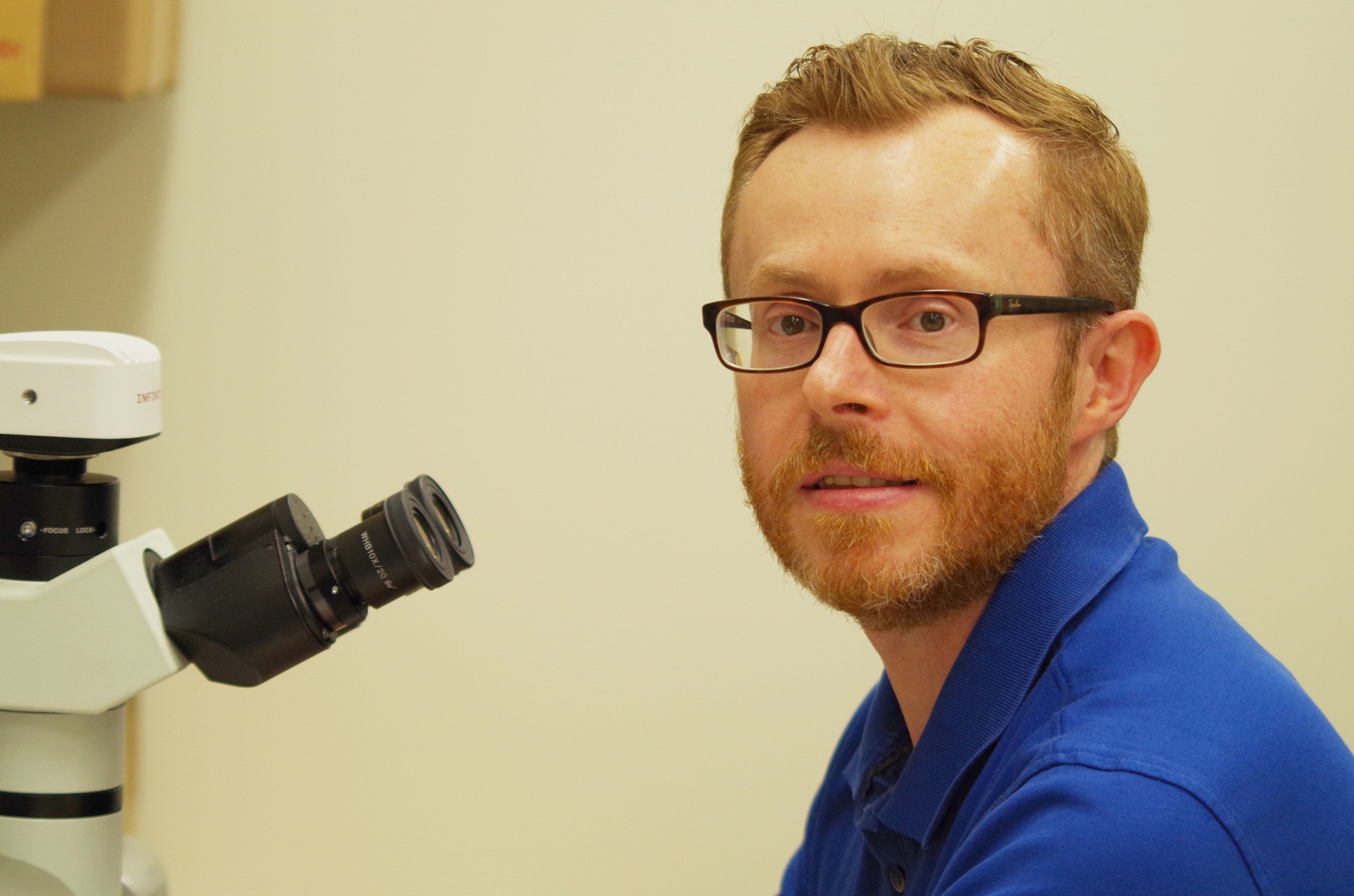Public donations spur COVID-19 research to identify and treat severe cases
Kalyna Hennig - 30 April 2021

Paul Jurasz in his lab
Some of COVID-19’s most severe outcomes include lung injury, blood clotting and death. In the Faculty of Pharmacy and Pharmaceutical Sciences, the COVID-19 and Emerging Pathogens Fund—supported primarily through public donations—is helping associate professor Paul Jurasz and his team identify whether a specific blood protein—angiostatin—contributes to and indicates these more severe outcomes.
“The immediate goals of our research are to determine whether angiostatin blood levels are elevated in patients with moderate to severe COVID-19 versus healthy individuals, so as to help establish whether angiostatin plays a role in COVID-19 pathology,” says Jurasz.
After that, Jurasz hopes that levels of angiostatin in a patient’s blood can be used as an indicator of the potentially more severe outcomes of COVID-19. If this is the case, the team thinks the protein can be identified as a new drug target to decrease COVID-19 severity and death as well.
“From a pharmacology point of view, the drug options for treating COVID-19 patients with severe disease are highly limited,” says Jurasz. “Better identifying those most at risk of severe outcomes and developing novel effective therapies for them is key.”
Currently, Jurasz and his team are working with Alberta Precision Laboratories and the Canadian Biosample Repository at the University of Alberta to obtain COVID-19 patient blood samples and analyze them in their laboratory.
“We have preliminary evidence to suggest that angiostatin may serve as a marker to better predict the risk of death in those hospitalized for COVID-19,” says Jurasz. “However, we are still working to account for patient factors that may impact the results. Shortly, we will also be performing a more thorough analysis of how blood angiostatin levels change as COVID-19 progresses.”
Based on promising early results, they have also begun to test how the protein may negatively impact various cell types under conditions mimicking COVID-19, as well as testing molecules that may block its action.
“We are taking a hierarchical approach, trying to first understand what role angiostatin may play in COVID-19 pathology, and then utilizing this information to rapidly guide research into its utility as a potential biomarker and drug target,” says Jurasz. “Without the COVID-19 and Emerging Pathogens Fund we would not have been able to take this critical first step.”
“We have all been impacted by COVID-19 in some form, whether it’s through illness, economic hardship, or psychological stress,” he says. “Therefore, the success of this or any project that can diminish the negative impacts of COVID-19 or lead to its quicker end is of importance and serves as a motivation to perform this important research.”
The COVID-19 and Emerging Pathogens Fund was supported primarily through public donations. A month-long University of Alberta fundraising campaign in May 2020 for COVID-19 research, using the global movement Giving Tuesday NOW as a launch pad, received more than $200,000 from donors—including foundation partners and a few matching gifts. The funds were then directed through the Li Ka Shing Institute of Virology towards six new COVID-19 related projects across three faculties, including Jurasz’s project in Pharmaceutical Sciences.